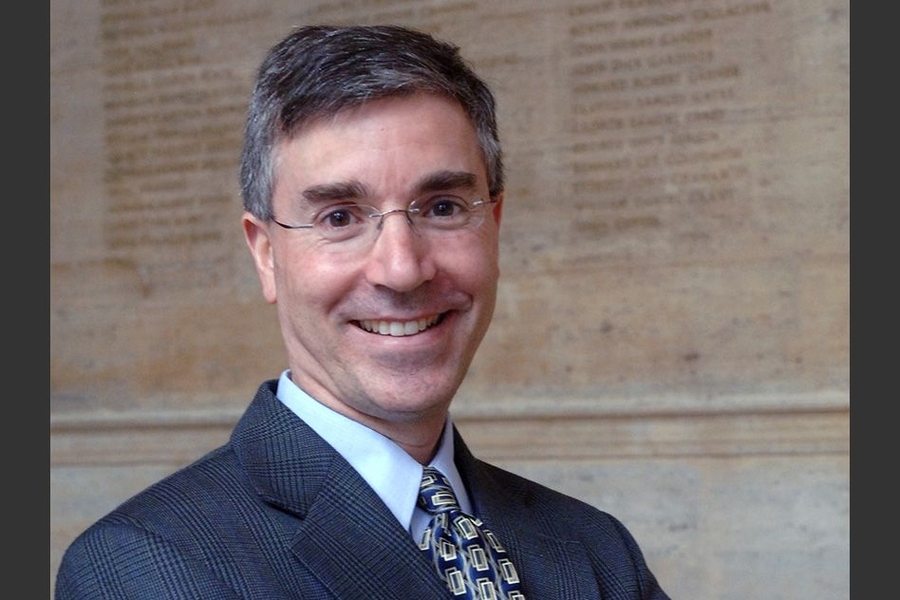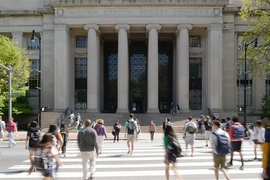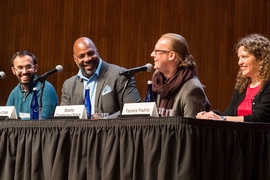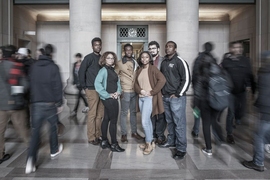The U.S. Supreme Court yesterday issued its decision in Fisher v. University of Texas, with a majority of justices rejecting an argument that the university’s consideration of race in an admissions program was unconstitutional. Many in higher education have closely watched this case since 2008 because of its possible implications for affirmative action policies at schools nationwide, as well as for the leeway that educators have in assessing and experimenting with their admissions programs to enrich the education of every student.
MIT, which supports the use of race as one of many factors in making undergraduate admissions decisions, filed amicus briefs in the case in 2012 and again in 2015. In both “friend of the court” briefs, MIT and peer institutions wrote that they “speak with one voice to the profound importance of a diverse student body — including racial diversity — for their educational missions.”
Stuart Schmill, dean of admissions and student financial services, sat down with MIT News to discuss MIT’s race-conscious approach to admissions, why it matters, and the opportunity for the Institute’s policies to continue to evolve.
Q: Can you describe MIT’s approach to admissions and what, if any, implications you think today’s decision has on our process?
A: Our admissions process is designed to serve MIT by enrolling a student body that will best allow the Institute to meet its mission of educating students and solving the big problems of the world. And to do that we know that we need a diverse student body.
To achieve that goal, we look at a whole range of factors; we think of diversity quite broadly. We are looking to enroll students with different perspectives, from different backgrounds, but who also have different interests and talents. That’s because when students from different backgrounds and with different interests and talents come together, they make each other better. Our students learn more from their classmates than from any other mechanism here, so having that rich mix of diversity is really important for student learning.
Race is one of many factors we consider. It is never a controlling factor, so it is never the only thing that we consider, but it is one part of the whole. Our process is an individual, holistic admissions process, which means we look at every student in their entirety.
With regard to today’s decision, I would say those of us at MIT, and admissions officers around the country — at least the colleagues that I have spoken to — all understand the importance of diversity. So I think it’s a real collective sigh of relief that the court reaffirmed the importance of diversity and the need to allow each university to responsibly determine the shape of its diversity for its mission.
Q: Why do you think it’s important to consciously work to admit a diverse student body?
A: Enrolling a diverse student body is an important goal because it makes the educational experience at MIT better for all students; it is a necessary element of our educational mission and of ensuring that our students get the most out of their education.
I think the choice between diversity and excellence that some will present is a false choice. I would argue that you cannot have excellence without diversity. For example, there are studies that show the benefits of diverse teams, studies that show they produce better work. Because of persistent inequities in our society, there are groups, particularly women and students of color, that are underrepresented in math, science, and engineering subjects, and so we have to work very hard to ensure we are attracting the very best students from all backgrounds to attend MIT to achieve this necessary diversity.
Q: What is your reaction, on both a personal and professional level, to today’s ruling, which has been nearly eight years in the making?
A: It has been a long haul, and I know that these kinds of issues and the conversations that the nation is having about race and equality are really difficult conversations. We are having them on our campus. But I’m just really happy about the court’s decision because it reaffirms what we know to be true: A diverse student body is critical for our ability to offer the best education to all of our students and therefore to be able to best prepare students for the world when they graduate.
Q: Looking ahead, and thinking of MIT as a living laboratory, do you see ways admissions could evolve?
A: We are always looking to improve our admissions process. And we’re always willing to experiment to find new and different ways of finding talented students and ensuring they are fully aware of what MIT has to offer. We are also constantly thinking about the criteria that we use to select students.
It was exciting to see the justices reference that universities can “serve as laboratories for experimentation” in their opinion. That rings very true to us at MIT.
Q: Are there activities taking place now on campus that inform your thinking about the future?
A: I think the conversations we’ve been having on campus, that have been catalyzed by the recommendations of the BSU [Black Student Union] and the Black Graduate Student Association, have highlighted the importance of our community, and of inclusivity and respect for every member of the community. Bringing this thought back to the significance of this case and the decision today, our ability to enroll a diverse student body is absolutely critical for us to be able to develop the kind of inclusive community that we need here, that our students are then going to go out and spread as leaders in society.













